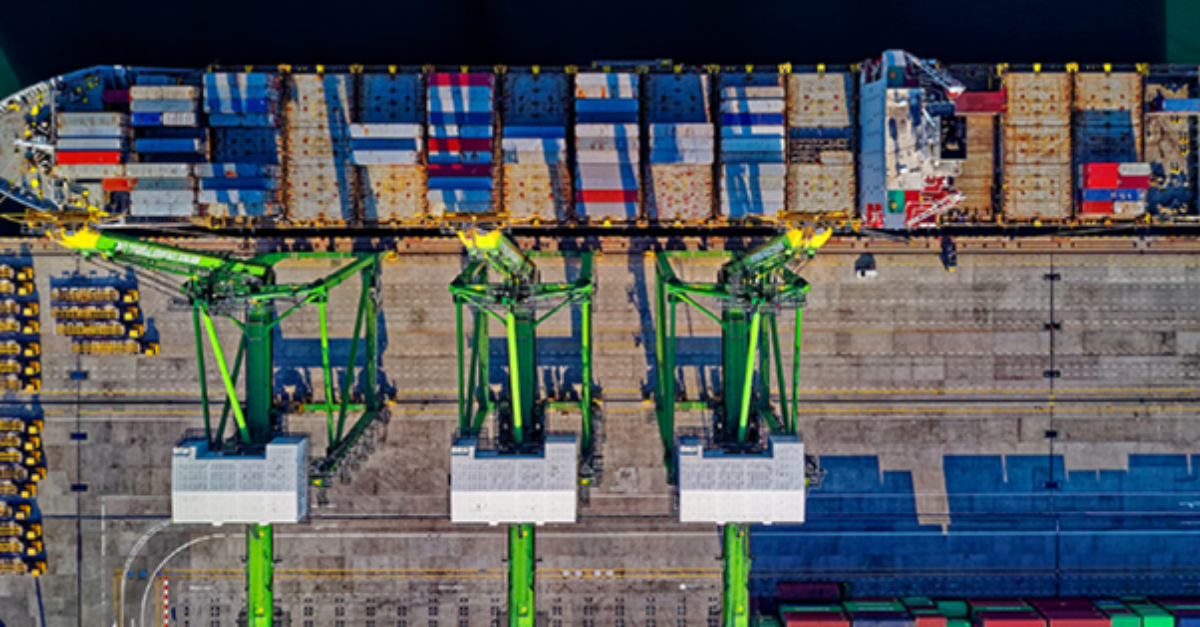1. Optimization of resources
IoT enables improved productivity and operational efficiency. Indeed, two of the top reasons companies say that they have adopted IoT are increased efficiency of operations (55%) and increased employee productivity (50%).The ability to track inventory and manage warehousing, as well as facilitate vehicle health telematics and emergency services is particularly useful within mobility organizations. Remote commands such as vehicle reprovisioning and drone-based delivery have helped to accelerate automotive and transportation businesses beyond measure. Within power and utilities organizations too, the most common reasons for IoT adoption are efficiency-oriented, with smart grid automation and grid asset maintenance being just two of them. Almost half of manufacturing companies cite industrial automation as a key use of IoT, and 47% of companies in the smart places field say IoT helps them with productivity enablement.
Read about how Codit helped Euronav to improve productivity by connecting their vessels to shore:
2. Improve products and services for customers
Of those measured in the IoT Signals Report, one in three organizations use IoT for improving products and services for customers. Of those companies, the ones who do benefit from a stronger bottom line, with 50% reporting increased revenue, compared to 39% who don’t utilize the technology for improving customer products and services.
Read about how Codit helped Schréder to install intelligent lighting in cities around the world:
3. AI, Edge Computing and Digital Twins technologies
Associated IoT technologies such as Artificial Intelligence, Edge Computing, and Digital Twins become more and more easy to use once an IoT plan is incorporated. Those who use such emerging technologies in their IoT solution have more success with IoT overall, because once the value is proven, it’s easier to build it into the organization. AI is the most widely adopted emerging technology, with 79% of organizations adopting it as part of their IoT solution.
Read about how Codit helped Duco to implement AI into their IoT solution:
4. Sustainability
Another use for IoT is to gather important information that can help improve the sustainability of an organization. By monitoring power quality and usage, the environmental impact and carbon emissions produced by an organization can be mitigated and reduced. It can also help to reduce unnecessary waste, and in some industries, be used to observe endangered habitats. 34% of the organizations surveyed in the IoT Signals Report say they’re prioritizing sustainability goals as part of their progress in the coming years, with 50% of them expecting to reach carbon net-zero by 2025. Moreover, sustainability is often met whilst implementing IoT for other reasons: when organizations adopt the technology to reduce costs or increase efficiency, they often find that they use fewer natural resources.
See how Codit helped ENGIE to move faster into the future of renewable energy:
5. Safety conditions
When organizations use IoT they improve the safety of their work environments, giving systems the chance to act on what is actually happening in real-time. By predicting if a machine is broken or dangerous, or if safety is being compromised in any way in the workplace, disasters can be prevented. IoT can also be used to collect and analyze employees’ health data, and can help to improve safety compliance. Monitoring the air quality and other factors in the workplace can also improve the safety of a space. Indeed, improved safety conditions are one of the top three reasons many companies adopt IoT. 45% of the oil and gas industry and 37% of power & utilities organizations use IoT for workplace safety and personal safety. Within the smart places industry too, 46% are using IoT for building safety. A little more than one in three manufacturing organizations utilize the technology for plant safety.
Read about how Codit helped EMSA to mitigate maritime incidents with an IoT solution:
6. Competitive advantage
As IoT is rapidly implemented across industries, getting ahead now can only put organizations at a competitive advantage, with its ability to optimize productivity, save costs, and help the environment. With its manifold advantages, adaptability and continued growth, it seems that companies not using it will struggle to keep up.
7. Security in the face of future world decelerators
Whilst most things slowed down during the COVID-19 pandemic, technologies such as IoT helped many businesses to survive continued lockdowns. According to the IoT Signals Report, one in three decision-makers stated during the pandemic that their organizations would increase their investment in IoT due to COVID-19: in 2021, nearly half of organizations (44%) said they would invest in IoT more, as opposed to 31% in 2020. Ways in which IoT helped organizations included sales enablement and sustainability, and close to half of organizations monitored reported increased revenue because of IoT. This demonstrates the key role IoT plays in the resilience and adaptability of a reduced workforce, and shows the impact IoT could have on helping industries to survive in the wake of future pandemics and other disasters.
8. Predictive maintenance
The predictive maintenance offered by IoT can analyze a production system in real time and predict when and how a problem may occur. Such potential issues can then be spotted and mitigated proactively. This improves the productivity of the system, save money on replacing the machines and forewarns workers of potential safety hazards. Moreover, less is spent on maintenance and repair, and workers can focus on core operations and become more productive. As a result, companies see a greater financial return.
9. Supply chain management
When organizations use IoT to help with their supply chain management, they can track their goods all over the globe and in real-time. They can therefore manage their inventory better, and share up-to-date times and delays with customers. For smart places organizations, IoT can help with space management and optimization, as well as stock and supply monitoring and in the food and drink industry, the freshness of perishables can be ensured. When the supply chain is more transparent, it is also more appealing to customers and businesses.
Subscribe to our RSS feed

